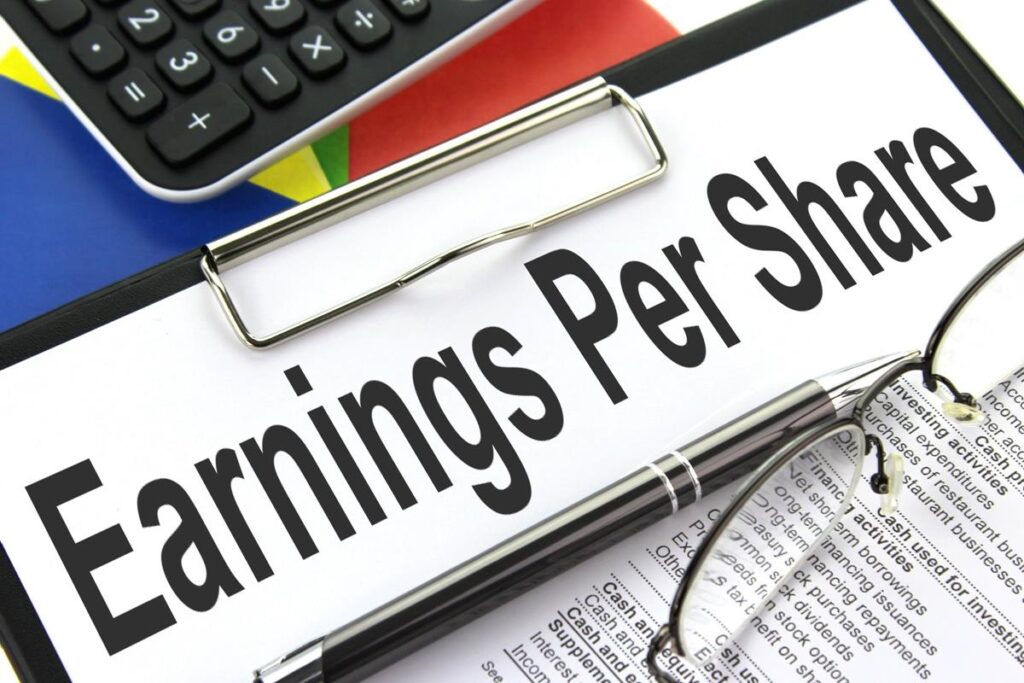Understanding EPS (Earnings Per Share). When it comes to investing in stocks, it is very important to evaluate the profitability of many companies. One of the most popular indicators that many investors are using to verify a company’s profitability is EPS. EPS is a unit of income earned by a company divided by the number of shares issued by that company.
In this article, we will learn more about what EPS is, how it is calculated, and how to use it to evaluate the profitability of companies.

Definition of EPS
EPS is an abbreviation of “Earnings Per Share”, which means earnings per share. It is the net income earned by a company over a period divided by the number of shares issued. EPS is a very important indicator for stock investors, and a high earnings per share indicates that a company is generating revenue efficiently. EPS is used as a relatively accurate indicator of a company’s profitability because it shows how much profit it generated per share, not just the company’s gross profit.
How do you calculate EPS?
The formula for calculating EPS is as follows.
[EPS = Net income ÷ Number of shares issued]
Here, net income refers to the net income earned by the company, excluding all expenses, and the number of issued shares refers to the total number of shares issued by the company. For example, let’s say that company A has a net income of $100 million over a year, and the number of shares issued by the company is 10 million shares.
In this case, the EPS is calculated as follows.
[EPS = 100,000,000 (US$100 million) ÷ 10,000,000 shares (10 million shares) = $10]
This company’s EPS is 10 dollars. This means that the company’s stock generated a profit of $10 per share.
About the importance of EPS
EPS is one of the key indicators used by investors when evaluating the profitability of several companies. A high EPS means that a company can benefit its shareholders more. Therefore, it can be seen that the higher the EPS, the more attractive it can be to investors. In addition, EPS indicators also play an important role in evaluating companies’ performance. If a company’s EPS is continuously increasing, it can be interpreted as a signal that the company is steadily growing and that the investment value in the company is likely to increase in the long term.
The relationship between EPS and PER (share price/earnings ratio)
EPS has a close relationship with the price-to-earnings ratio (PER). PER is the value obtained by dividing the current stock price by EPS and is used by investors to determine whether the current stock price is overvalued or undervalued relative to the company’s profits. For example, if two companies have the same or similar share prices, a company with a high EPS has a lower PER. This shows that the company’s stock has become relatively undervalued. On the contrary, a company with a low EPS has a high PER, which can be seen as a sign that the stock may have been overvalued. However, once again, you should always refer to various indicators.
What are the limitations and precautions of EPS?
EPS is a very useful indicator for assessing a company’s profitability, but there are several limitations. First, because EPS reflects short-term profitability, a company may not be able to fully evaluate its long-term growth potential. Second, EPS may vary depending on the capital structure of the company. For example, even if two companies posted the same net profit, if one company issued fewer shares than the other, the company’s EPS would be higher. That’s why you should take these into account when using EPS.
Conclusion
EPS is a very important indicator when evaluating a company’s profitability in stock investment. It is because EPS represents how much profit it can generate per share for shareholders, which plays a big role in evaluating a company’s value and growth potential. However, since EPS alone cannot evaluate everything about a company, it is important to analyze it with other financial indicators. Understanding the exact meaning of EPS and its calculation methods, and making smart investment decisions based on them can lead to successful stock investment. I will always support you. Thank you.
Also Read:
https://www.investopedia.com/terms/e/eps.asp
https://www.stockguidebook.com/what-is-p-e-ratio-meaning-and-importance-in/



